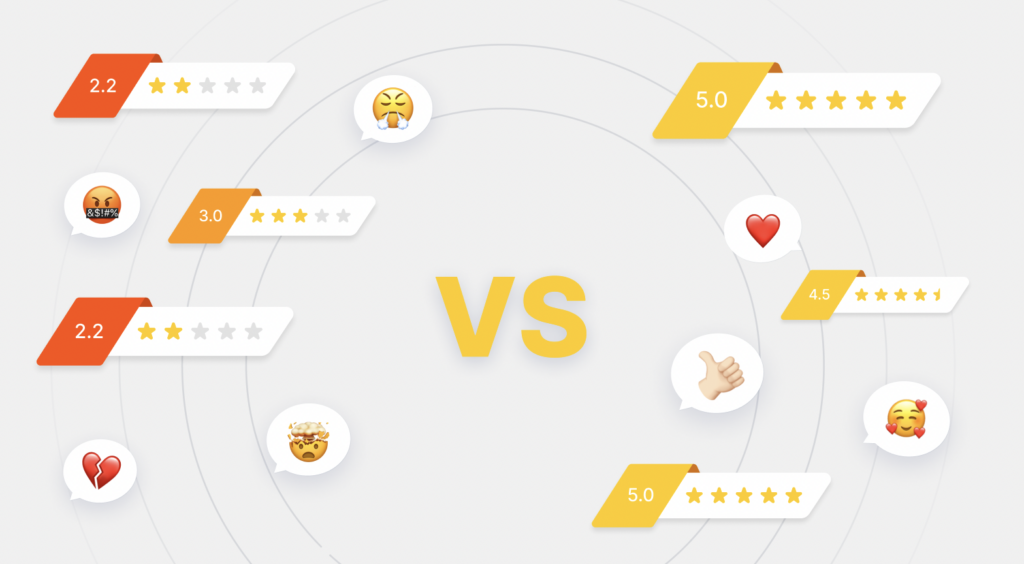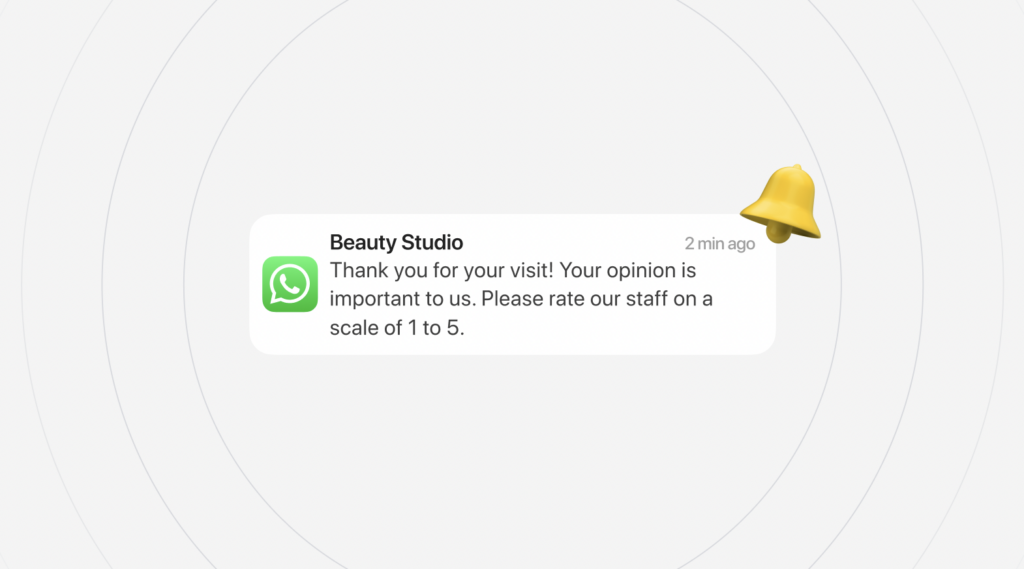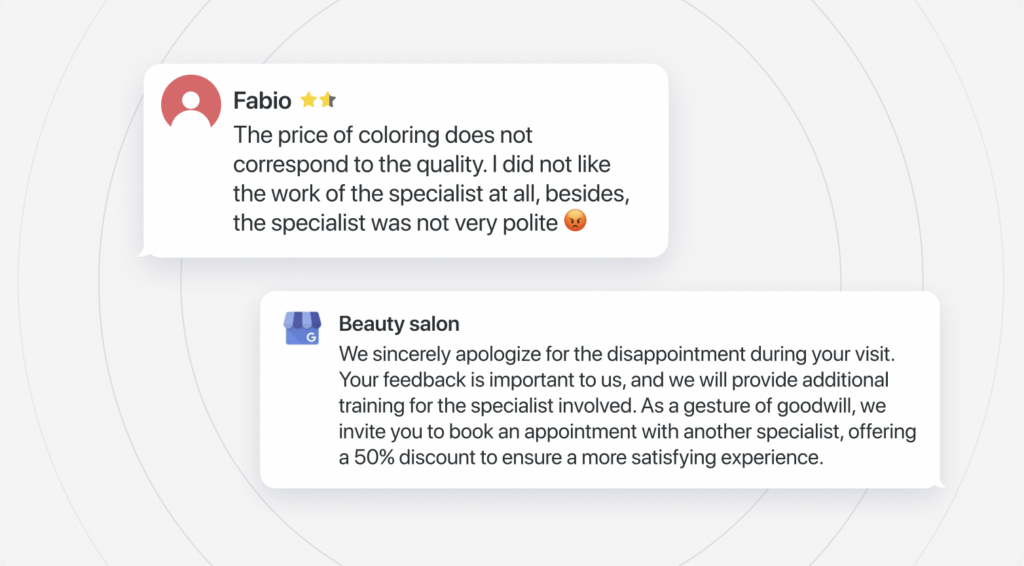How to Handle Reviews
“I won’t react to a negative review to avoid conflict,” thinks the business owner. Is he correct? No, because neglecting a complaint can further upset the customer. In collaboration with the Flowsell mailing service and Altegio’s clients, they shared strategies for maximizing benefits from reviews.

Why Reviews Matter
Customers typically use maps to locate nearby studios and make choices based on reviews.
Consider a customer deciding between two studios:
- The first studio is a mere 10-minute walk away. Client checks the reviews and finds two overly brief comments with a rating of 3.6.
- The second studio, a bit farther, boasts a high rating and numerous client comments, with the studio administration responding to each review.
Which studio do you think the client will choose?

How to Obtain Reviews
You could message the customer, asking them to leave a review while offering a small discount or a complimentary service as an incentive. However, remember:
- Ratings on maps aggregate overall service ratings, so ensure the client mentions the specific service they used. This allows potential customers to focus on relevant feedback.
- Encourage clients to name the specialist they visited. This information can help develop a staff motivation system, recognizing and rewarding the most popular staff members.
Altegio’s integrations can streamline this process to ensure nothing is overlooked.
Reviews are crucial for attracting new customers and enhancing the loyalty of existing ones. Regular review monitoring is essential for your business outcomes.

Are Negative Reviews Acceptable?
Negative reviews are inevitable, as not every client will be satisfied. However, disregarding a negative review could result in losing a customer.
Before selecting a salon, a prospective customer will likely read at least ten reviews, so a few negative ones won’t deter them, especially if you respond to them politely and constructively.
How to Respond to a Negative Review Without Losing a Customer?
If a negative review is posted, respond promptly: apologize and propose a solution. This approach not only retains the customer but also demonstrates to potential guests your commitment to maintaining a reputable image and willingness to rectify errors.

Here are some tips for addressing customer dissatisfaction effectively:
Offer an apology and compensation.
“We sincerely apologize for the inconvenience. This does not reflect our usual standard of service. As compensation, we are offering you a 30% discount on your next visit, and we will assign you one of our most experienced specialists.”
Respond calmly and empathetically, acknowledging the customer’s feelings. If the guest was emotional in their complaint, avoid responding harshly. Instead, express understanding.“Irene, we realize this situation has upset you, and we want to make up for the poor experience you had at our studio.”
Ask for details to fully understand the issue.“Could you please provide more details: when did you visit us, and which specialist and service did you choose? This information will help us address the issue and prevent future occurrences.”
Inform the customer of your action plan so they know how you intend to improve.“We will discuss this with the specialist and provide additional training.”








